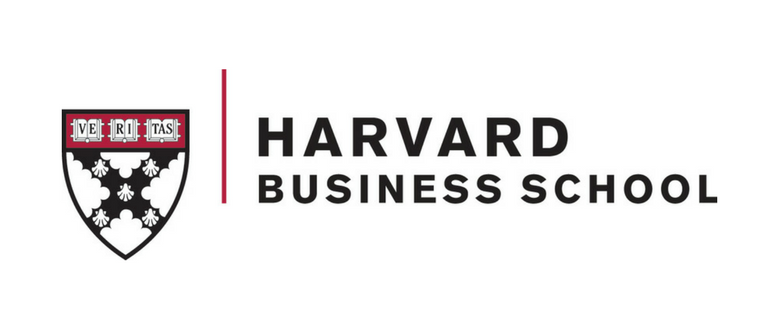Last month, CEO of Venture Valuation, Dr Patrik Frei, delivered a live webinar titled ‘Valuation of Life Sciences Start-up’ to healthcare alumni of Harvard Business School
You can watch the webinar here.
Due to a large number of questions from participants, not all of them could be answered during the event. In this post, we present Dr Frei’s answers to the questions.

Should the discount rate already capture the risk?
Patrik Frei: The discount rate captures the non-product development specific risk, so not all the risk.
Why are the discount rates so high if they do not include scientific risk?
PF: If we don’t use a risk adjustment, the discount rates can be as high as 60% or more, so 20% is not so high. See Nature article here
Why do they overlap so much for different phases?
PF: I assume this question relates to the discount rates for the different stages – because even at a later stage a company can have a higher non-product development specific risk than an earlier stage company. Thus, there is an overlap of discount rates.
How do you build-in the experience of the biotech team in the risk assumptions?
PF: We have a rating system to take into account different aspects of the management team (experience, composition, motivation, incentive structure, boards, etc.). Also see here.
Could you provide any comments regarding medical device start-ups?
PF: Here it depends whether the company also needs to do clinical trials, so it depends on the class of product. In general, the timeline, costs and failure rates for medical devices are lower.
The success rate seems important to valuation. To what extent do you tend to adjust these beyond therapy area like potential changes to the market place etc.?
PF: We always review the specific product and then make the necessary adjustments to the success rate. The published success rates are the starting point and a good guideline.
Are there any components of this exercise that are consistently/often underestimated/overestimated? For example, development costs are often more expensive by a factor of two in retrospect.
PF: The timeline and cost of development are often underestimated. With regards to the market, we have seen both, overestimation but also underestimation. Especially if a product is very successful, sales can be much higher than anticipated. A good example is Gleevec/Glivec that was developed for an orphan indication but had peak sales of over USD 4,6bn in a year.
Does using the stage-I just a discount rate, and addition to the further risk adjustment by the stage double count for the risk of development?
PF: The discount rate does not include the risk of failure in a clinical trial. Thus it’s not double counting the risk.
There are many assumptions in valuation, clearly. How do you build into the case the ‘short term’ value of investing in a ‘sexy’ technology that might drive ‘perception of value’ for an entity that is NOT necessarily interested in long term value creation?
PF: When we do valuation, we also do market and deal comparable valuation. This takes into account the sentiment of the market, which can change over time.
How do the calculations and deals differ when considering a venture capital rather than pharma?
PF: The basic calculations are the same. However, with Venture Capital, often an “added value premium” is used for the discount rate. It serves to compensate the VC providing smart money, i.e. network, know-how. However, one could argue a pharma company does also provide such added value. With regard to deals, having a VC on board often means that the company will raise equity and develop the drug further itself, thus getting a higher value later (but also taking a higher risk). Doing a deal with a pharma company means sharing the risk and getting some upfront payment right away. A later stage deal should provide better deal-terms, but the company would have to raise more money itself to develop the product further. Who takes how much risk depends very much on the deal terms.
Could you give some pointers on valuing a medical device company/product, in particular, the one that goes via 510k route and does not require clinical trials?
PF: When we do a valuation of a medical device company which does not have to do any clinical trials, we use the standard DCF method. Here all the risk would be integrated into the discount rate. See Nature article here.
Could you give a bit more explanation about the discount rate? In the case study, 21% seems like a high discount rate when combined with the low “risk” or success adjustment.
PF: Success rates and discount rates cannot be directly compared. The success rate is the probability that one or several stages of development are successful. The discount rate calculates the present value of future cash flows, so even though both are percentages, it’s a different concept.
Do you have any guidelines for what valuations are typically achieved at various fundraising rounds, or at least what % ownership is often given up?
PF: This is a very difficult question. Even though some investors use this approach, we would argue that it depends very much on the company, the technology, the market, the IP and the management. Every company is different and just because they are raising series A or B does not mean they are all more or less the same value. Also, how much equity the founders give away depends very much on the same rationale. It’s easy just to take an average number for a specific series, but this approach would incentivize below average companies to raise money from a certain investor and above average companies not to take money from him. So, unfortunately, I don’t have any average numbers.
How do you value healthcare IT companies? Is it comparable to the valuation of a software company?
PF: We also use a DCF, market and deal comparable and the VC method. The risk adjusted net present value does normally not work for a healthcare IT company.
Where do VC firms tend to invest these days? Between Phase 2 and 3 or phase 1 and 2 or pre-NDA? How do their investment strategies differ from those of pharma companies?
PF: It depends on geography, especially for VCs. In Europe and Asia where investors are more risk averse compared with the US, investors tend to invest at a later stage (clinical phase I and II). Phase 3 and pre-NDA require a lot of investment. This most often is not suited for VC investments. In the US we have seen more investments across the development stages (pre-clinical to pre-NDA). Pharma companies also tend to invest across all development stages.
What are the differences between how VC ‘s look at the valuation for investment vs. pharma companies for strategic investment?
PF: VC are mainly interested in the exit, so how easy and profitable can the company be sold in the future, thus generating a return for the VC. This is related to the set-up of funds with limited lifespans of 10 to 12 years. VCs also look at how much money needs to be invested in the company until an exit, as any future capital need will dilute existing shareholders. Strategic pharma investors look for a product that fits their existing sales force and/or cover a future area of interest/growth. Most corporate venture funds are also return driven but have certain focus areas that match the pharma partner’s needs.
Choosing a discount rate should reflect risk level; why double down on this with rNPV? It seems like we’re accounting for risk twice.
PF: The discount rate reflects the non-product development specific risk (anything that could go wrong unrelated to the success of a clinical trial), i.e. possibility to raise money or do a deal. The risk adjustment only considers the risk of the clinical trial.
PF: Just a comment from a medical device perspective the process described here is similar, though some valuations are highly subjective. An example might be the Canadian robotics company Titan Medical, which has raised considerable funding over the past 6-8 years while failing to achieve any significant milestones.
How does the determination of valuation differ for venture deals (VC), rather than in M&A scenarios? What other metrics and methods should be used by a biotech?
PF: The basics for the valuation are the same. However, an investor often does not control the whole company (minority shareholder). In an M&A the buyer takes controlling ownership, thus would pay a premium for this (lower discount rate). For biotechs, we normally use the following methods: rNPV / sum of parts; deal comparable; market comparable; VC method.
